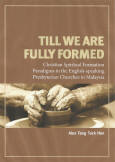 spiritual strongholds: rulers, powers, princes, and principalities in the high places....
spiritual strongholds: rulers, powers, princes, and principalities in the high places....

The Parthenon rests on a plinth three steps high. It is a peripteral temple (surrounded by columns). The peristyle consists of eight Doric columns on the east and west side, and seventeen along the north and south side (if you count the corner columns twice). The shafts consist of twelve fluted drums and are about 33 feet high (10.43 m), including the capitals, with diameters tapering from 6 feet 3 inches (1.92 m) at the base to 4 feet 9 inches (1.49 m) at the top.
There is a perceptible bulge two fifths up each column; the Greeks knew the principle of the outward curvature of a column (entasis), which compensates for the optical effect that makes columns seem thinner in the middle when viewed from below. The corner columns are thicker, reducing the space between them and their neighbors: because they receive more sunlight, they would otherwise have appeared thinner than the rest. Finally, to give the impression of absolute perfection, the plinth gradually increased in height, by about 4 inches in the middle of the long sides and by about 3 inches at the center of the facades.
When work began on the Parthenon in 447 BC, the Athenian Empire was at the height of its power. Work on the temple continued until 432; it symbolizes the power and influence of the Athenian politician, Perikles, who championed its construction.
It was built to replace two earlier temples of Athena on the Acropolis. One of these, of which almost no trace remains today, stood south of the Parthenon (between the Parthenon and the Erechtheum). The other, which was still being built at the time of the Persian sack in 480 BC, was on the same spot as the Parthenon. It was called pre-Parthenon or Old

er Parthenon. It was built as a sanctuary for Athena Parthenos shortly after the Battle of Marathon (c. 490-88 BC) in which the Greeks won a decisive victory against the Persians.
The name Parthenon means the "temple of the virgin goddess", and refers to the cult of Athena Parthenos that was associated with the temple. Athena's cult seems to have existed from very early times as the patron of Athens. The Parthenon survived as a temple to Athena for close to a thousand years.
After Christianity became the official religion of the Roman Empire in the 6th century, the Parthenon became the Church of the Parthenos Maria (Virgin Mary), or the Church of the Theotokos (Mother of God). During the Fourth Crusade where Greece was captured from the Byzantine Empire by the crusaders, it became a Roman Catholic Church of Our Lady.
Question: Is there a change in the deity worshipped or a change in name only?
After the Ottoman conquest, the church was converted into a mosque in the early 1460s. On 28 September 1687 an Ottoman ammunition dump inside the building was ignited by Venetian bombardment. The resulting explosion severely damaged the Parthenon/church/mosque.
Labels: Greece2008, Spiritual Warfare, Spirituality

 this is what remains of the Temple of Asklepios
this is what remains of the Temple of Asklepios a reconstruction of what the temple looks like
a reconstruction of what the temple looks like poster in the museum in Epidaurus
poster in the museum in Epidaurus











 studying the Holy Scripture
studying the Holy Scripture















































